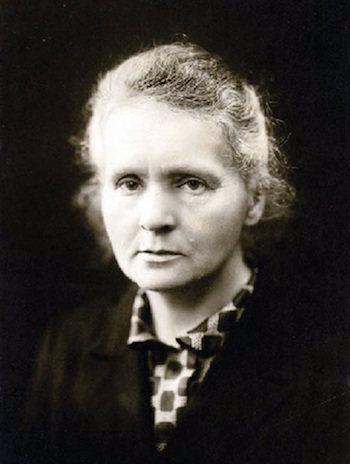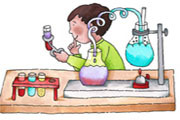More women than ever are currently pursuing scientific careers. Did you know, though, that historically many schools and universities did not even allow women to study science and mathematics? It's also worth considering why, hundreds of years ago, women were burned at the stake as witches - were they not more likely to be early biologists and horticulturists, studying and making use of nature? Keeping in mind the myriad challenges that women in science have faced, it is even more amazing that the following women found the commitment and determination to become internationally influential scientists.
Inspiring Female Scientists
Mary Anning (1799-1847)
Mary Anning was a British fossil collector and paleontologist. She frequented the cliffs of Dorset in England, where she collected previously unheard of fossil specimens. She discovered the first ichthyosaur skeleton (at the tender age of 12) and contributed greatly to the understanding of prehistoric marine life. Despite all this, Mary was deemed ineligible for acceptance into the Royal Geographic Society of London because of being a woman. In 2010 she was finally recognized for her scientific achievements when the Royal Society named her as one of the ten British women to have most contributed to science. About time!
 Mary Anning helped discover the first ichthyosaurus skeleton!Courtesy of Between a Rock
Mary Anning helped discover the first ichthyosaurus skeleton!Courtesy of Between a Rock
Elizabeth Blackwell (1821-1910)
Wondering who paved the way for female doctors in the United States? Elizabeth Blackwell was the first woman to graduate with a medical degree in America. Because she was a woman, she had so much trouble being accepted into medical school that she was reportedly told to come back and try again in the disguise of a man! She was ultimately accepted to Hobart College, studied there and in Europe, and worked for over 25 years as a physician.
 Elizabeth Blackwell was honoured with her own stamp!Courtesy of Like Success
Elizabeth Blackwell was honoured with her own stamp!Courtesy of Like Success
Marie Curie (1867-1934)
Marie Curie grew up in Poland. In her early twenties, she traveled to Paris to study physics, where she met her future husband, Pierre Curie. Marie and her husband were two of the first scientists to study radioactivity, and in fact Marie herself coined the term. She was also responsible for discovered the elements polonium and radium. Marie won the Nobel Prize for Chemistry in 1911 and went on to become one of the most famous female scientists in history.
 Marie Curie was one of the most famous scientists of all time.
Marie Curie was one of the most famous scientists of all time.
Rachel Carson (1907-1964)
This American scientist can take partial credit for influencing the progression of the environmental movement in the United States. Rachel extensively studied the role of synthetic pesticides on the environment, and her 1962 book Silent Spring prompted a United States ban on certain harmful pesticides. Her work also inspired the creation of the U.S. Environmental Protection Agency. Think about how much you hear about the environment these days - Rachel Carson directly contributed to that awareness of environmental concerns!
 Rachel Carson wrote the influential anti-pesticide book Silent Spring. Courtesy of Cool Cleveland
Rachel Carson wrote the influential anti-pesticide book Silent Spring. Courtesy of Cool Cleveland
The above women paved the way for contemporary female scientists, but studies show that science, technology, engineering, and mathematics jobs are still largely filled by men. Stereotypes against women in science continue to prevail. If there is anything to learn from the women who have come before, it is that, in order to succeed and make a difference in the world, one must fight and persevere despite challenges that can sometimes seem insurmountable.
Have Your Say!
What struggles have you faced in following your dreams? Share with us!

































